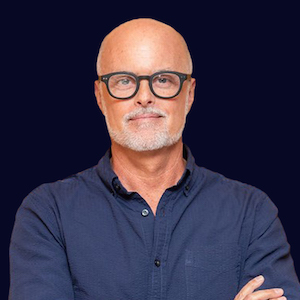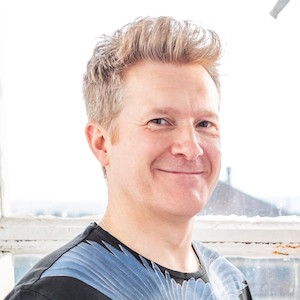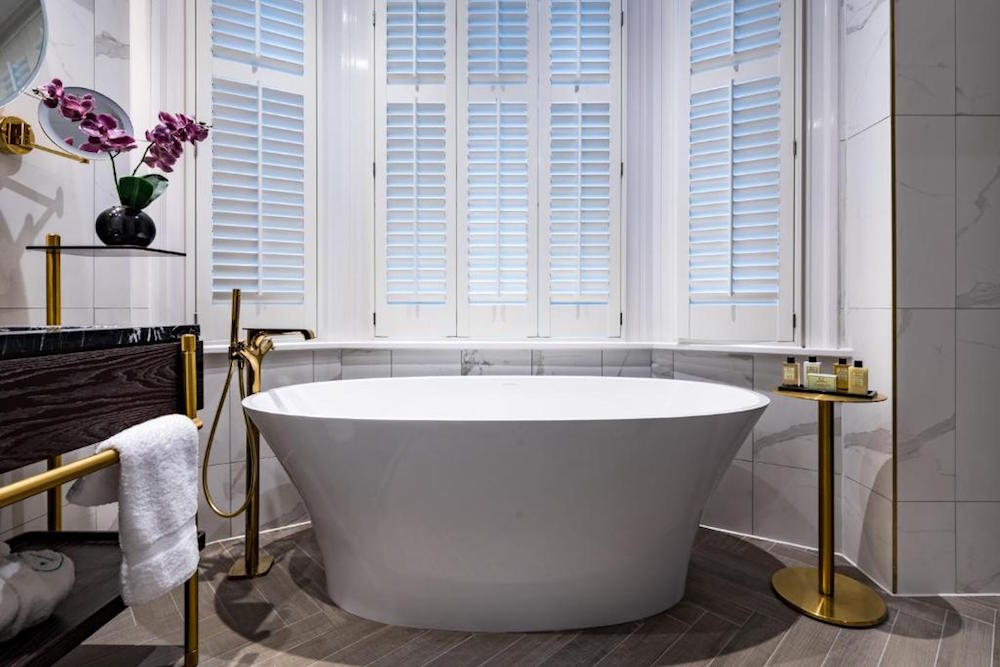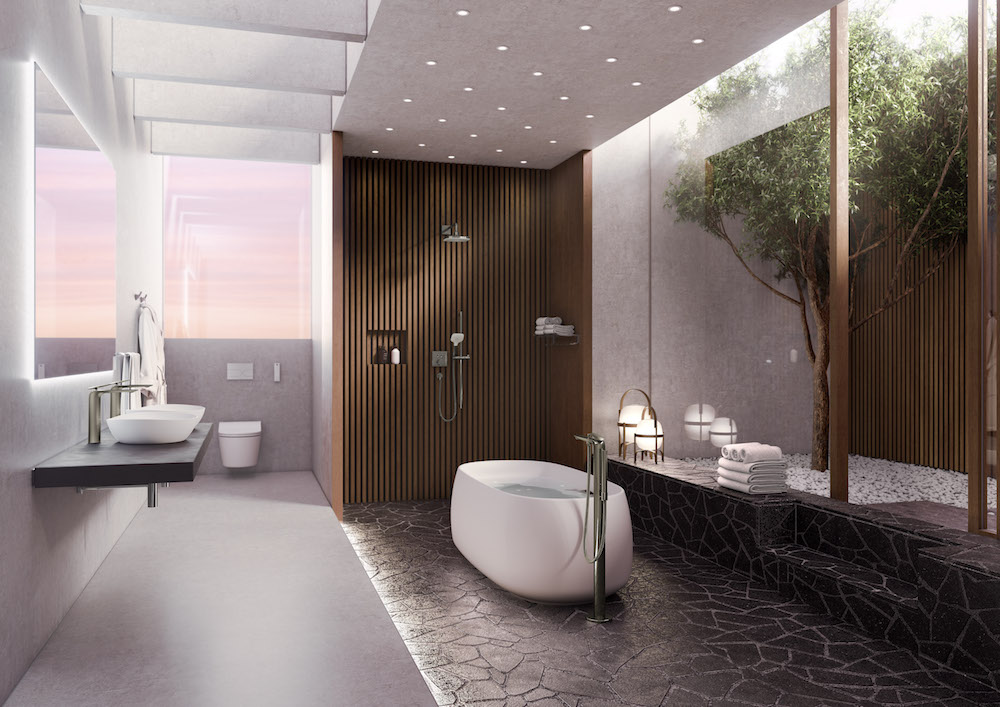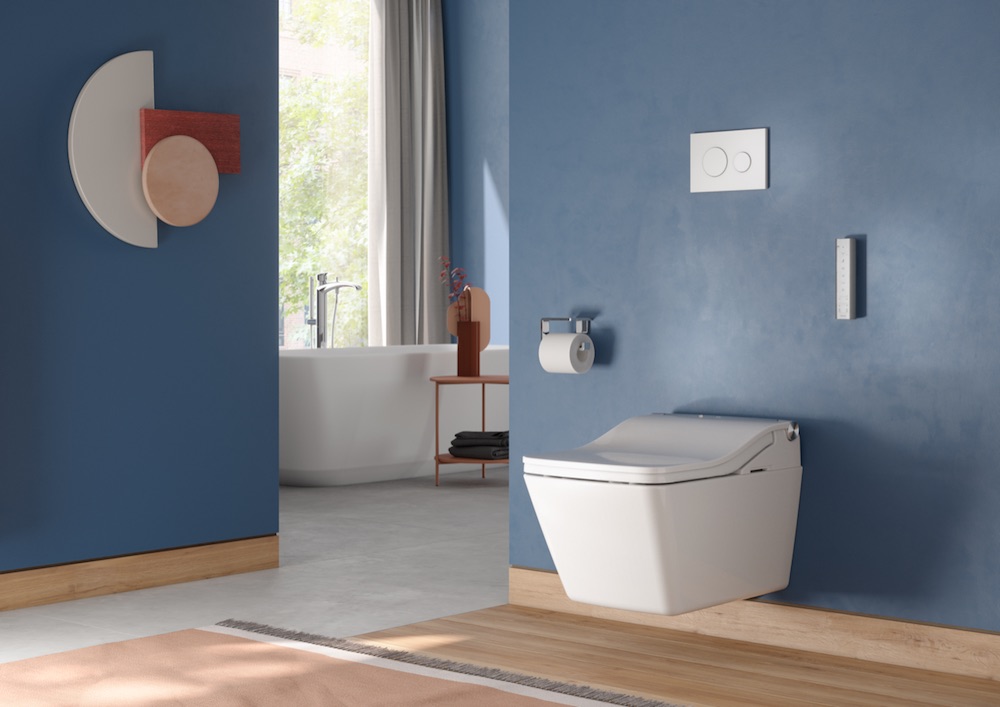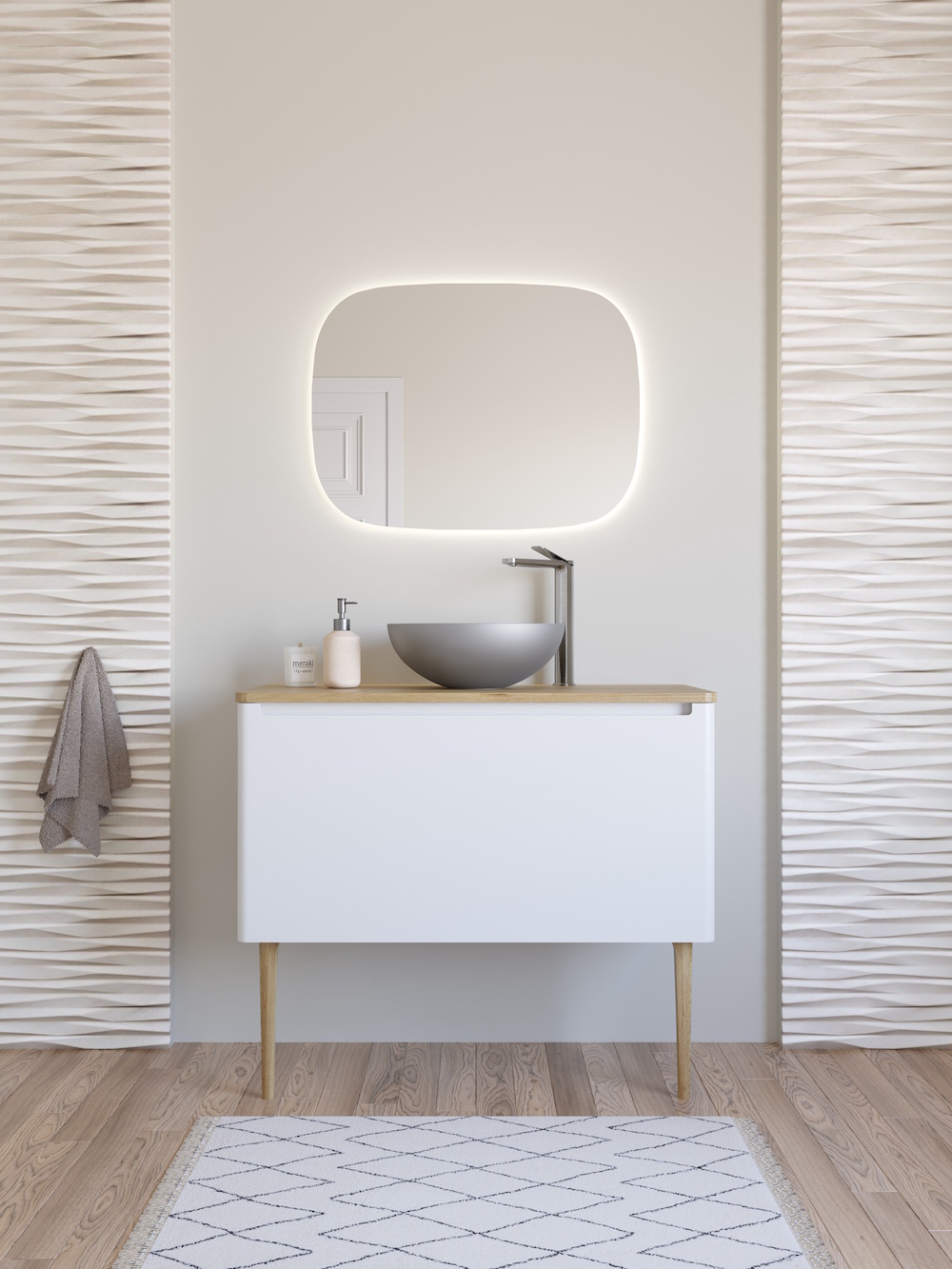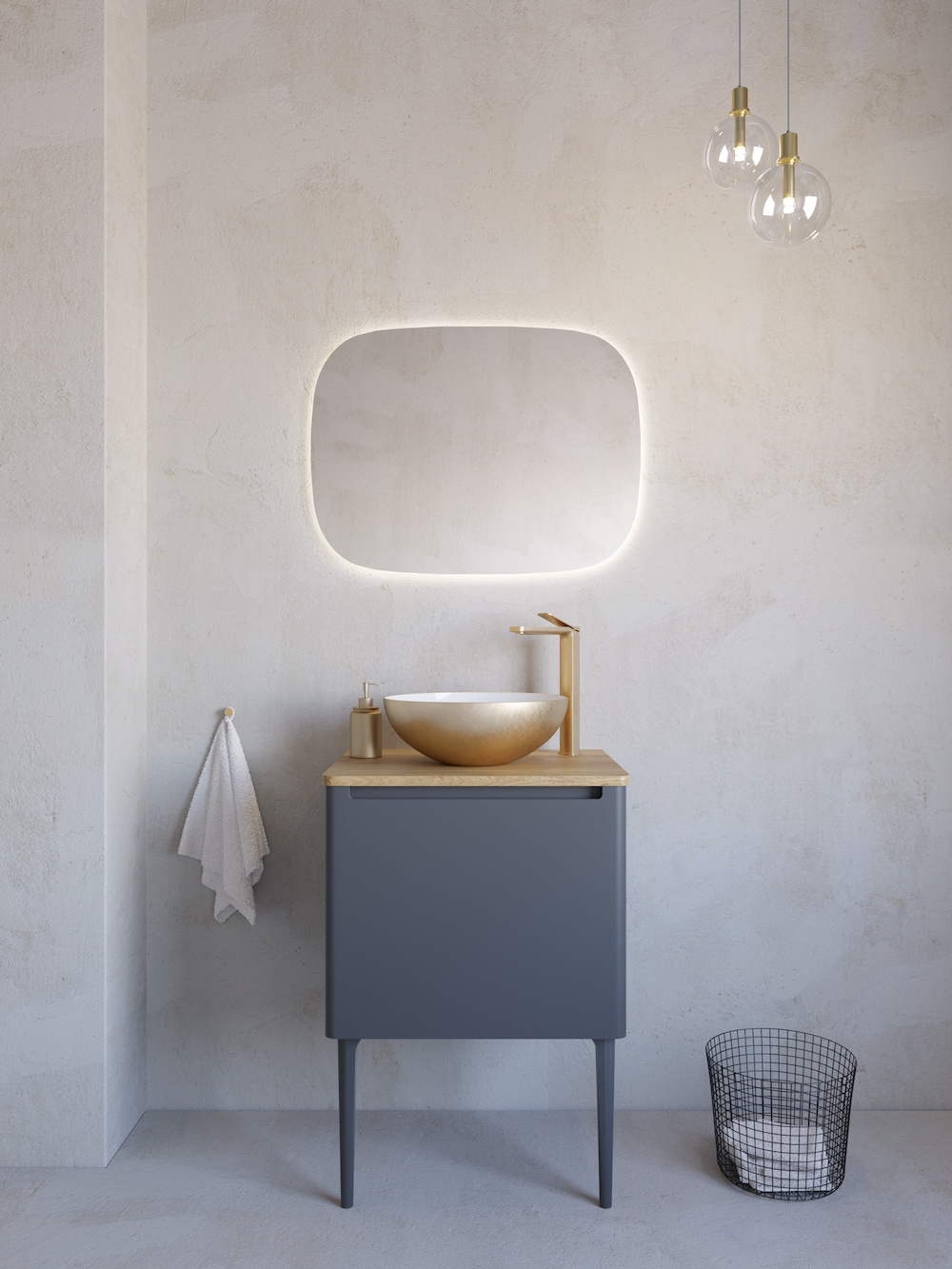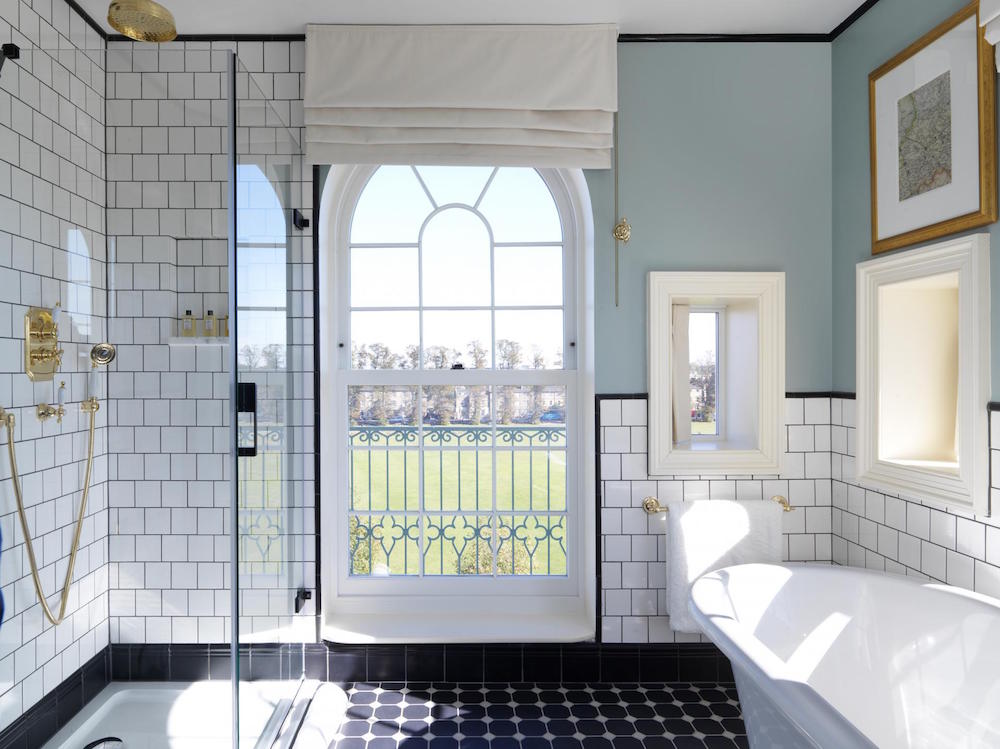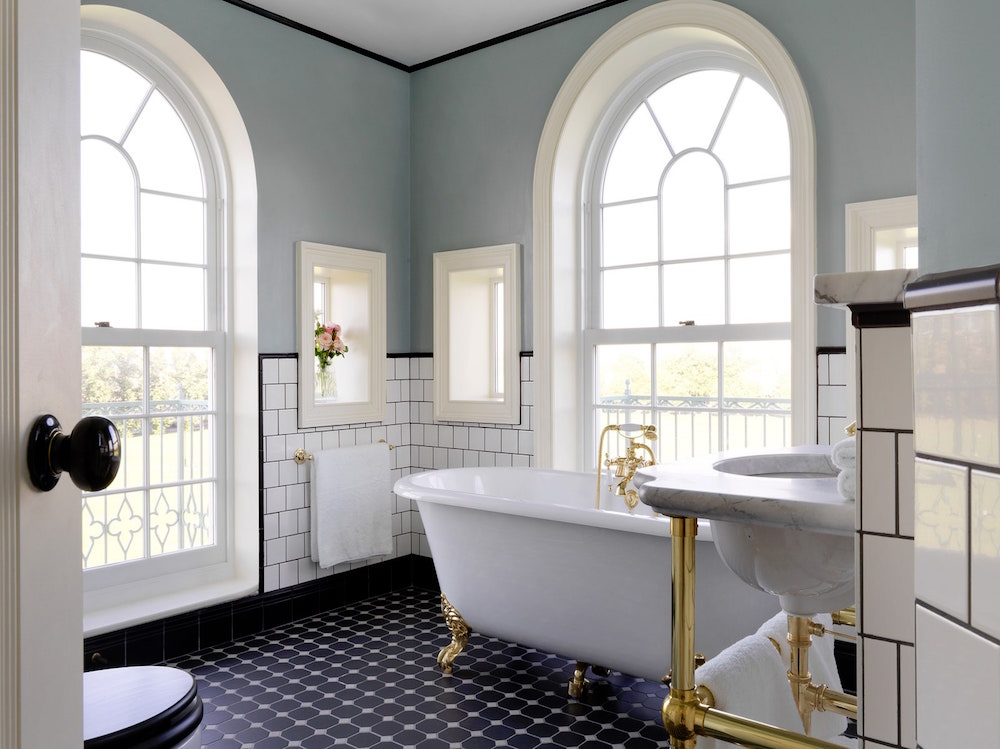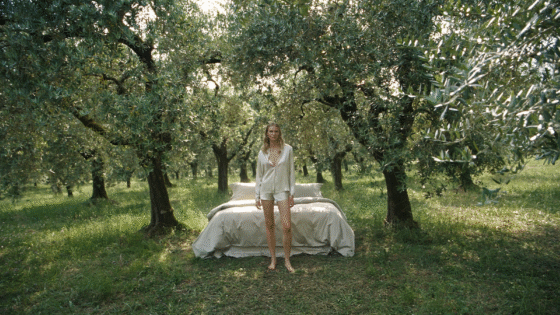With new demands from modern travellers asking for heightened wellness and wellbeing experiences sheltered inside hotels, designing a timeless bathroom has become even more of a challenge in recent years. Hotel Designs’ latest roundtable, in association with Utopia Projects, welcomes leading interior designers to help us separate concept over reality when it comes to specifying bathroom elements…
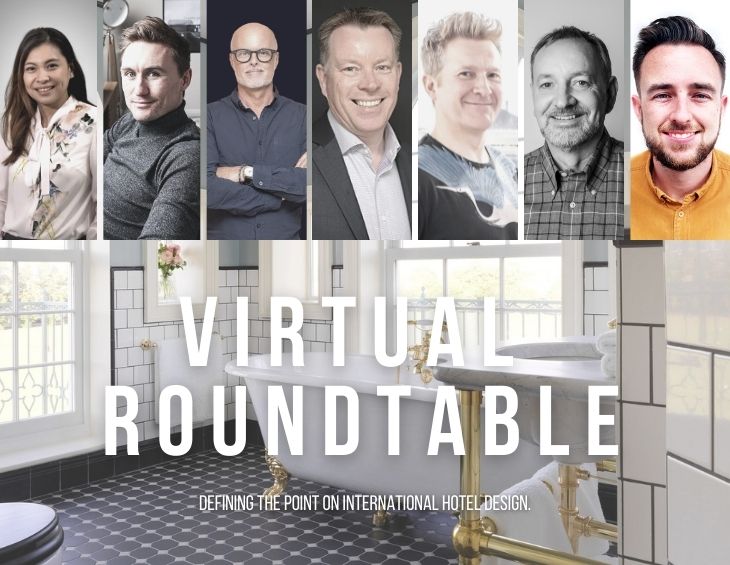
There’s a lot more to bathroom specification than simply selecting products, on budget, that will create the exact look and feel you were trying to achieve. In 2020, Ideal Standard undertook some research to establish exactly what interior designers’ thoughts were regarding bathroom design. The results showed that 73 per cent of designers agreed that washrooms are the most difficult rooms to design and plan in commercial projects. Some would argue, with new consumer demands around wellness and wellbeing, if the same survey was taken today then that number would be much higher.
In order to understand the challenges – and more importantly the solutions – when it comes to specifying bathrooms in 2021, we launched a roundtable with the help of Utopia Projects, which offers a unique service, working with designers to specify the appropriate products for their projects at the best prices, after the layout of a bathroom has been established. To cut through the noise, and to really understand the industry’s top tips when it comes to designing the bathroom, we were joined by industry-leading interior designers.
On the panel:
- Vince Stroop, Founder, stroop design
- Craig McKie, Co-Founder & Creative Director, Bell & Swift
- Joey Goei-Jones, Design Director, GDC Interiors
- Stuart Adamson, Project Consultant, Utopia Projects
- Nick Hickson, Co-Founder, THDP
- David Harte, Associate, Dexter Moren Associates
Hamish Kilburn: How much of the design is driven by function and how much is driven by the form of the design?
Craig McCkie: As hospitality designers, I believe we like to get the foundations right first – and a great shower experience is a great place to start.
When working with hotel chains, there are certain bathroom brands that we naturally gravitate towards because they meet brand standards. What is encouraging to see is that those brands give us the luxury to explore different finishes, colours and other qualities. I think the industry has really benefited, aesthetically, from the drive for suppliers to bring down the cost of these additional services.
Vince Stroop: For seven years or more, hotel bathroom design has been following certain trends taken from the residential sector. In order for that to happen, brands that supplied to the hospitality industry had to keep up. As a result, there are now more options out there that, importantly, also function really well. Generically speaking, there are two things any guest is after when checking in to a hotel: a comfortable bed and a decent shower. If you don’t get those elements right then you will lose out on getting repeat business. To be competitive, brands and independents have had to step up.
Nick Hickson: In addition to budget, it’s also important to consider the amount of space allocated to bathrooms – I have seen bathroom space allocated in hotels grow over the years, as it [the bathroom] has become a more of a feature within the overall aesthetic. In some ways, we are now trying to open the bathroom up or have a visible window from this area into the bedroom in order to pinch some of the space back. Ultimately, this comes down to designing the bathroom intelligently so that there is a cohesive language in both areas.
- Image caption: The bathrooms inside Stock Exchange Hotel in Manchester, designed by Space Invader (specified by Utopia Projects). | Image credit: Stock Exchange Hotel
- Image caption: The bathrooms inside Stock Exchange Hotel in Manchester, designed by Space Invader (specified by Utopia Projects). | Image credit: Stock Exchange Hotel
HK: How much of the overall budget is typically allocated towards the bathrooms in hotel design?
Joey Goei-Jones: With the clients we’ve been working with, they are all starting to realise the importance of the bathroom within the offering of the guest experience. If there is a complaint, more likely than not, it will come from the bathroom. In cities such as London, there are a lot of older properties so bathrooms tend to be outdated. What we try to do is encourage clients to considering things as a whole when making budget decisions.
A lot of the time, we see clients allocating about 20 – 25 per cent of the per-room budget on the bathrooms. I always say that realistically they are not going to be refurbish the bathroom regularly so we would much prefer to throw everything at the bathroom in order to future-proof it, which is such an important element.
Also, as consumer demands evolve we have had to consider other things, such as shower or WASHLET toilets. Traditionally, we would never intentionally put electric products too close to water for obvious reasons. Therefore, making sure the infrastructure is up to a quality standard is vital.
Stuart Adamson: One of our driving factors when working with designers is that we look at those elements, and when considering future-proofing the reliability factor creeps in because aesthetics is one thing. Most manufacturers will tell you that they can meet the water pressure requirements and the flow requirements that you need to reduce flow but without sacrificing performance. What we have realised is that some manufacturers are better than others when it comes to producing really good spares availability for a long time after the product has been discontinued. We are constantly searching for the brands that really shine in this area to ensure that the products we specify really are future-proofed.
- Image caption: The Comfort Round Flotation Tub by TOTO. | Image credit: TOTO
- Image caption: THE WASHLET is TOTO’s The WASHLET is TOTO’s signature product, which launched in 1980, and has evolved to meet modern consumer demands ever since. | Image credit: TOTO
HK: Why aren’t more brands that are well known in the residential market more popular among hotel designers?
CM: We can be very limited because certain hotel groups already have their list of preferred suppliers.
NH: Reliability is key and many of the German brands have really proven themselves in this area. From our brand, being more Italian, we just like to look at collections that (I have to say) are just so much better looking.
We are working on a project at the moment where we are working closely with a supplier to modify and adapt a particular range they already have on the market so that it is more relevant for a spa environment. Yes, there’s a longer lead time – in fact, it takes more time for everyone involved – but there is a uniqueness about that project.
DH: I think it’s true, in the last five or six years, clients have been wanting everything to feel more bespoke and they are wanting to have something unique in their design. We are finding this more and more, which is very closely linked to the rise in lifestyle brands and hotels. Everyone is seeing that movement influence design and considering the interface guests have with these products. Therefore, bespoke design is finding a larger role.
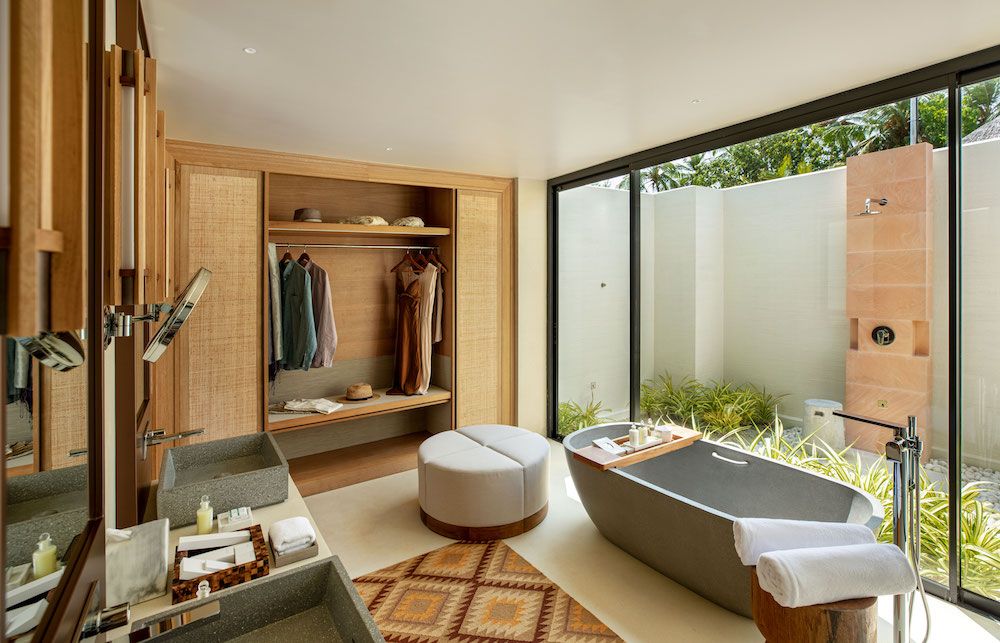
Image credit: Kuda Villingili
HK: In an industry that is full of collaboration, what is holding designers back when it comes to working with a bathroom consultant?
JGJ: Certain suppliers will be a bit louder about their brands – and therefore we only really here from the suppliers and not the bathroom consultants who are able to give us all the ranges. We view Utopia Projects as experts and they are able to give us immediate information.
VS: We have a similar situation. Also, we are working with a lot of consultants already on a project, but it would be great to work with a bathroom consultant just so that we can then flex our design muscle a bit stronger. Also, it’s really helpful to be able to have that impartial, non-biased voice when it comes to advice.
- Image credit: Bathrooms Brands Group
- Image credit: Bathrooms Brands Group
HK: In a previous roundtable, we focused the spotlight on ethical design – and it was pretty shocking to realise that major brands are unknowingly partnering with factories that have terrible ethical values in the race to label their products with competitive prices. With this in mind, how much research do you, as designers, put in to finding out the methods of manufacturing and the materials used in the production stages?
JGJ: In the bathroom area, especially, a lot of brands have always been very open and have invited us to the factories. For me, that’s always been really valuable because you can meet the people who are making the products and see where the waste goes. In general, it just gives us peace of mind.
SA: We only work with brands who will release an ethical statement for the business. We will not work with brands where there is no traceability.
NH: I tend to look at bathroom design like architecture design because you are looking at so many different elements and materials that have to fit together and meet solutions. These are things that any designer, looking at that aspect, has to be very aware. When things go wrong, they go wrong badly. When you understand the architectural conjunction, you prevent where possible running into those issues. Following on from that, understanding the ethical decisions, we somewhat take it for granted that these brands are doing everything they can to ensure we are operating in an ethical arena.
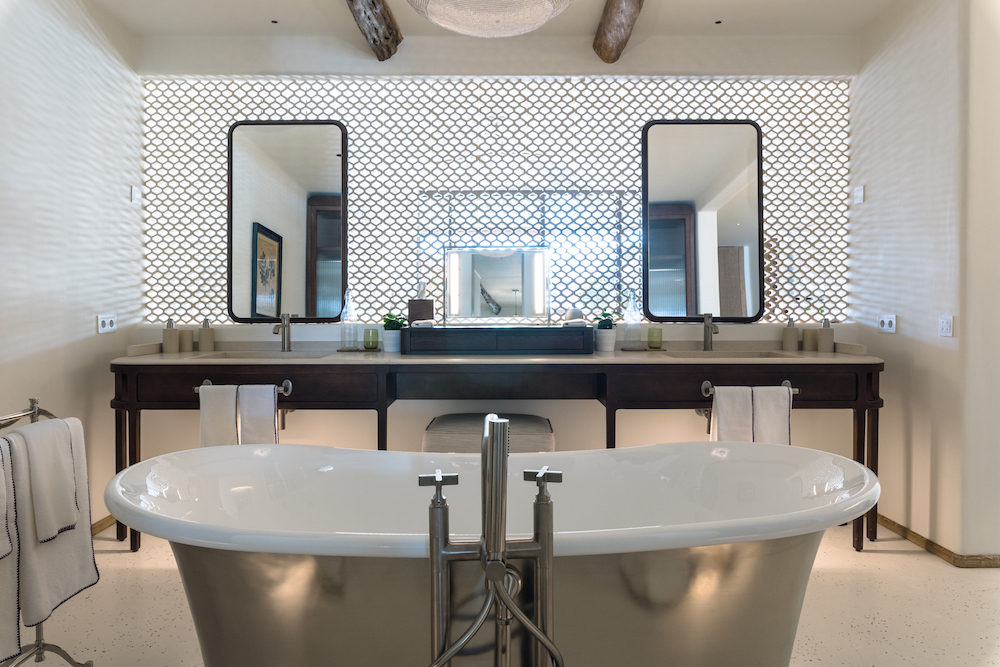
Image credit: Six Senses Ibiza
HK: How far can we push the boundaries of bathroom design, which as you mention, has to be very technically accurate?
NH: It’s a juggling act, and what we try to is break down these established rules. It’s not always easy and it can take up a little more space but that develops new solutions within those spaces. For us, it’s just a creative process that we really enjoying working in. As a result, it enlivens the guests experience and allows for a more enriching experience.
CM: Going back to budget, the vanity space can be as important in a room than any of the FF&E. A nice piece is a nice piece. It blurs the line where you are spending the money. If you bring the bathroom into the guestroom then, then you are creating multi-purpose spaces. In terms of longevity, a vanity piece is going to be made of more robust material – so that makes a lot of sense.
HK: What would say is the biggest challenge that modern designers face when creating bathroom spaces?
JGJ: A lot of the time it will come down to budget, but brands are developing so quickly to launch new products. It can be difficult to be up to date on the latest products, and that’s where a consultant can really help. Clients are starting to gauge on the technical side and we are all learning – and that naturally lends itself well to working with experts.
NH: Some of the challenges are unavoidable. The bathroom is probably the area within the hotel that changes the most from concept to completion. This is because of all the connections with all the services within the building. Especially on new-builds where space is a premium, you spend a good amount of time just formatting the rises that are coming into the building.
VS: And the layout of the bathroom is actually one of the biggest aspects – and it is a huge challenge for designers, to ensure, from an operational perspective, that these areas are accessible to get to. On top of that, you have to design a unique experience for your guests. If designers go too trendy in their design then they are potentially lowering that space’s longevity. I approach bathroom design like a puzzle and try to find the right parts that fit.
- Image caption: The bathrooms inside University Arms, designed by MBDS (specified by Utopia Projects). | Image credit: University Arms
- Image caption: The bathrooms inside University Arms, designed by MBDS (specified by Utopia Projects). | Image credit: University Arms
HK: When you’re pitching, how many of those boxes when it comes to bathroom design are ticked?
DH: I think it’s really key, when you are pitching, that you put forward something that is forward-thinking and that is different. It is important to push yourselves and your perspective clients to think differently. Of course, budget is a consideration, but if you sell the big idea of a particular part of a bathroom that becomes an integral part of the design, you can manage the budget in different ways to ensure that it happens.
NH: As designers, we are presenting good ideas but sometimes a client can run away with your idea. Therefore, I think it’s wise to be suggestive. There is a very fine line there, and we tend to be a bit more conceptual in our pitches.
Utopia Projects is one of our Recommended Suppliers and regularly features in our Supplier News section of the website. If you are interested in becoming one of our recommended suppliers, please email Katy Phillips.
Main image credit: Utopia Projects/Hotel Designs/University Arms Cambridge

